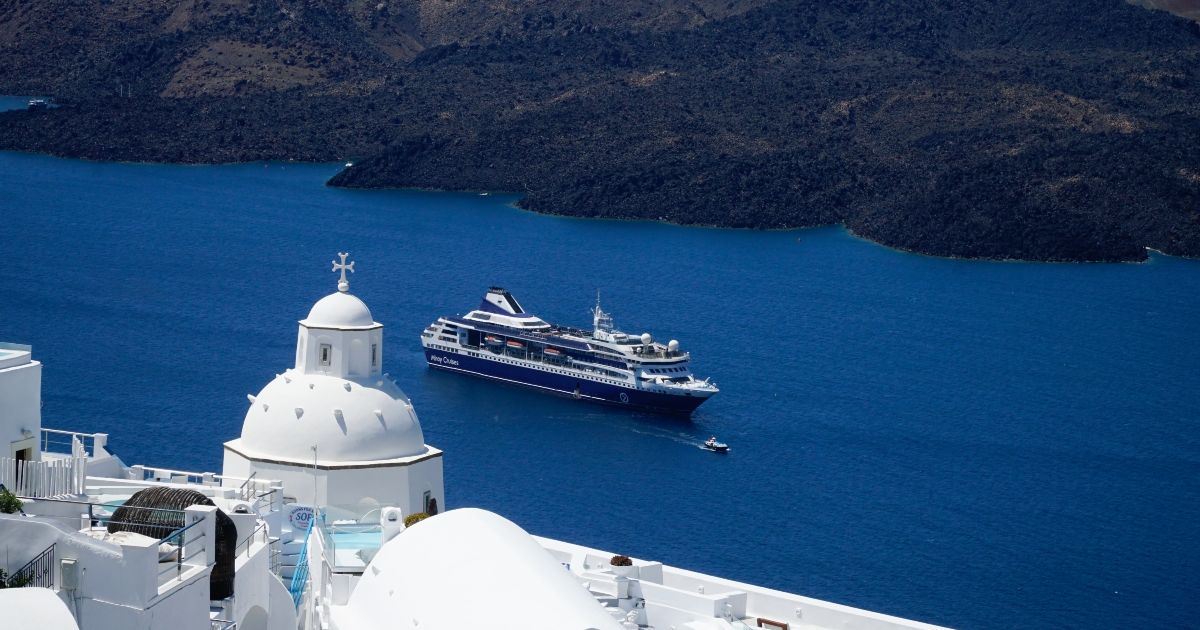Greece’s Cruise Sector Navigates Challenges Amid Rising Demand
While the tranquility of the iconic island of Santorini faces disturbances from seismic activity, Greece’s cruise tourism landscape is poised for unprecedented growth. Despite no cruise lines officially halting their scheduled ports at Santorini, the uncertainty surrounding the island’s safety remains palpable. Cruise companies are closely monitoring the evolving situation, waiting for government advisories on operational guidelines for accessing the island. This careful observation underscores the industry’s adaptability and resilience.
Monitoring Santorini: Cruise Operators on Alert
Concerns over Santorini’s geological stability have thrown a shadow over one of the Mediterranean’s most sought-after cruise destinations. As cruise operators navigate this delicate balance between safety and operational efficiency, they remain committed to ensuring traveler safety and experience. Expectations loom that, should restrictions emerge, companies will pivot seamlessly, substituting Santorini with alternative ports such as Chania, Heraklion, and Rhodes. The adaptability of cruise itineraries showcases the industry’s responsive nature to external challenges.
The Projected Boom in Cruise Traffic for 2025
Looking to the future, 2025 is shaping up to be a record-breaking year for cruise traffic in Greece. According to the honorary president of the Union of Cruise Shipowners & Associated Members, forecasts predict an exciting surge to 5.8 million passengers and 5,290 cruise arrivals at Greek ports. This significant increase is reflective of a broader trend towards more adventurous and immersive travel experiences among tourists.
A Quick Look Back: Surge from Previous Years
To provide context, Greece welcomed approximately 5.06 million cruise visitors in 2023, with 4,800 ship arrivals. Following this, 2024 saw an increase to around 5.55 million passengers and 5,080 ship arrivals, marking a steady return to pre-pandemic levels. Notably, 2019 marked Greece’s previous all-time high, making the current trajectory particularly promising for stakeholders in the cruise tourism sector.
The Shift Towards Smaller Ships
While the number of overall passengers increases, an intriguing trend is emerging—the rise of smaller and mid-sized vessels gaining favor among travelers. These ships often provide a more intimate cruise experience with heightened levels of service and unique itinerary options. As passenger preferences evolve, cruise lines are likely to take this into consideration moving forward.
Increasing Port Fees: What Tourists Should Know
A notable development in Greece’s cruise sector is the increase in port fees, especially in high-traffic areas such as Santorini and Mykonos. As of now, passengers can expect to pay an additional 20 euros per arrival at these popular ports. In contrast, other destinations may only charge 5 euros. These fees, effective during peak tourist seasons, highlight the need for infrastructure investment in these high-demand areas.
Revenue Generation and Infrastructure Improvement
The implementation of these fees is projected to yield over 40 million euros in revenue—a substantial sum aimed at reinvesting in local infrastructure and improved services at various ports. Leaders from the Union of Cruise Shipowners & Associated Members emphasize the necessity of using these funds strategically to enhance tourist experiences and modernize facilities, ensuring the long-term viability of Greece’s cruise tourism.
Anticipating and Adapting to Future Challenges
Even amid challenges, the resilience of Greece’s cruise industry shines through. Stakeholders understand that adapting to external circumstances—be it natural phenomena, regulatory changes, or shifting traveler behaviors—is pivotal for sustainability and growth. Cruise lines are committed to ensuring that customer safety remains paramount while still providing unforgettable travel experiences.
Santorini’s Allure Remains Strong
Despite the seismic activity, Santorini’s enchantment remains strong, drawing visitors with its breathtaking vistas, stunning sunsets, and rich historical backdrop. For seasoned travelers seeking adventure, Santorini continues to be a must-visit destination in their cruise itineraries. The island’s unique charm and vibrant culture offer a memorable experience that keeps drawing cruise lines back, proof that even amidst uncertainty, love for the destination perseveres.
The Economic Impact of Cruise Tourism in Greece
Cruise tourism plays a crucial role in Greece’s economy, contributing significantly to local businesses and communities. As cruise passenger numbers soar, the velocity at which money flows into local economies also increases, facilitating job creation and enhancing tourism services. This potential for economic upside reaffirms the necessity of robust planning and responsiveness in the cruise sector.
Strengthening Community Bonds Through Tourism
Moreover, cruise tourism enables stronger community bonds, creating opportunities for local artisans, restaurants, and service providers to engage with international guests. This cultural exchange enriches the local community and tourists alike, fostering a sense of global unity in the wake of local experiences.
Tourism Strategies in an Evolving Landscape
As we look to the future, tourism strategies must continually evolve to meet the challenges posed by both natural and logistical factors. Collaboration between government entities, cruise lines, and local businesses will be crucial in building a sustainable tourism landscape. Responsibility and innovation will be key components in navigating any disruptions that may arise.
Enhancing Guest Experiences Amid Directional Changes
To address the concerns about Santorini, cruise operators are likely to innovate and enhance guest experiences at alternative ports. Tours and excursions can highlight the unique features of Chania, Heraklion, and Rhodes, allowing passengers to discover the rich heritage of the Greek islands even when Santorini may be off-limits.
A Commitment to Safety and Quality
The cruise industry’s commitment to safety standards will also play a vital part in restoring traveler confidence as conditions unfold. By continuously reviewing and improving safety protocols, cruise companies aim to reassure travelers that their well-being is prioritized while still delivering unforgettable journeys across the Aegean Sea.
The Journey Ahead: Uncertainties and Opportunities
Despite uncertainties, opportunities within Greece’s cruise sector are flourishing, presenting a promising landscape for all stakeholders involved. As the country prepares for the anticipated influx of travelers in 2025, maintaining flexibility, fostering communication, and investing in local capacities will be essential for a robust recovery.
Conclusion: A Bright Future for Greek Cruise Tourism
In conclusion, Greece’s cruise tourism sector is at a pivotal moment poised for remarkable growth. While challenges persist, such as seismic activities in Santorini and rising port fees, the industry’s resilience and adaptability shine through. With projections for record passenger numbers, strategic investments, and a commitment to safety, Greece is ready to welcome travelers eager to explore its captivating shores. As the world continues to navigate the uncertainties that accompany travel, Greece’s dedication to enhancing the visitor experience ensures that its cruise tourism remains a leading choice for travelers seeking adventure and culture in the breathtaking Mediterranean.






















